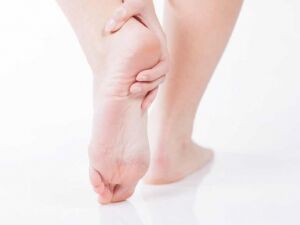Plantar Fasciitis vs Heel Spurs
Plantar fasciitis and heel spurs are two completely different conditions that are closely related to one another, and are often related to chronic heel pain. Being informed of what the differences between the two conditions are and how they are related to each other, is useful in understanding why your sports podiatrist may prescribe a particular treatment plan, and what you can do to help relieve pain and discomfort.
What is plantar fasciitis?
Plantar fasciitis is a painful condition that occurs when the strong band of tissue that supports your foot arch (the plantar fascia ligament) becomes irritated and inflamed, usually around the base of the heel bone but also through the arch or sole of the foot at times.

What is a heel spur? (plantar)
A heel spur is a bony protrusion on the heel bone. Heel spurs often develop in the area of the heel bone where the plantar fascia attaches. Heel spurs may vary in shape and size.
Causes of plantar fasciitis vs heel spurs (plantar)
Plantar fasciitis is caused when repeated or excessive pressure on the plantar fascia ligament causes strain and leads to micro-tearing of the tissue. Because of this tearing, the body’s natural response is inflammation. The inflammation is what causes the pain and stiffness patients with plantar fasciitis experience. People who are female, middle aged, overweight, pregnant, or who wear unsupportive or worn-out footwear are at higher risk of developing plantar fasciitis. Long distance runners and people who work in jobs that require them to stand for long periods of time are also at higher risk. Structural issues with the feet, such as having high arches or flat feet, or a suboptimal walking pattern also put a person at risk of developing plantar fasciitis. Tight calf muscles almost always present when a patient is diagnosed with plantar fasciitis.
Heel spurs are caused by calcium depositing on the heel bone, in response to chronic strain. They are often a secondary result of chronic plantar fasciitis, which has lasted many months. The body deposits calcium at the site of the plantar fascia attachment in an attempt to support the damaged ligament. Heel spurs do not develop overnight or in response to acute trauma.
Symptoms of plantar fasciitis vs heel spurs
Patients with plantar fasciitis classically experience a sharp, stabbing or burning sensation in the area of the heel close to the arch, but also sometimes right across the arch of the foot itself, which is worse first thing in the morning. The pain may subside as the day goes on. Patients often don’t experience pain during exercise, however as soon as they stop, the pain comes back immediately and is usually intense.
Patients with heel spurs tend to describe a stabbing sensation in the heel. Whilst heel spurs were once thought to be the cause of heel pain, it is now widely accepted amongst medical professionals that the spurs themselves are not the problem. Rather, the pain is caused by the spur physically pressing into the surrounding tissues, causing them to become inflamed and painful. Pain related to heel spurs may be worse in the morning and intermittent throughout the day. Often, there is no spur present in patient’s with plantar fasciitis, so it can be assumed that they don’t cause pain at all.
According to one particular study, approximately half of patients with plantar fasciitis also have heel spurs1. Quite often, heel spurs are discovered incidentally on xrays that are taken for other purposes. Only around 5% of patients with heel spurs report having pain in the heel1.
Treatment for plantar fasciitis vs heel spurs
If left untreated, plantar fasciitis can lead to heel spurs. Both conditions are often treated using a similar approach. Once your sports podiatrist has confirmed a diagnosis of plantar fasciitis with or without heel spurs, a treatment program can be tailored to your individual condition.
There are a number of different treatments available for plantar fasciitis and heel spurs. Some of the treatments that may be recommended by your sports podiatrist could include:
- Shockwave therapy– promotes blood flow, tissue regeneration and provides pain relief from plantar fasciitis
- Rest- taking a break from activities that cause you pain or aggravate your condition, or perhaps modifying those activities
- Icing- applying cold packs to your sore feet can help to reduce inflammation
- Stretching- your sports podiatrist will recommend and demonstrate the types of stretches that are appropriate for your condition
- Orthotic inserts- custom-made orthoses can help to support and control the arch of the foot to unload the plantar fascia and allow it to heal
- Footwear- your sports podiatrist may suggest that you use a different type of footwear to what you currently have, in order to support your foot correctly.
Your sports podiatrist will not be looking to remove a plantar heel spur surgically or otherwise as it is not the cause of your heel pain.
Please note that the information provided in this article, regarding the differences between plantar fasciitis and plantar heel spurs is intended for educational purposes only. It is not intended to diagnose any condition, nor should it be taken as general medical advice. If you are suffering with any type of heel pain or suspect that you may have a heel spur or plantar fasciitis, you should consult with a suitably qualified sports podiatrist. You can make an appointment with one of our podiatrists online at https://sydneyheelpain.com.au/book-online/ or by phoning (02) 93883322.
References
1Ferreira, R. C., (2014), Talalgia: plantar fasciitis, Revista Brasiliera de Orthopedia, 49 (3), 213-217.
Written by Karl Lockett, Sports Podiatrist


